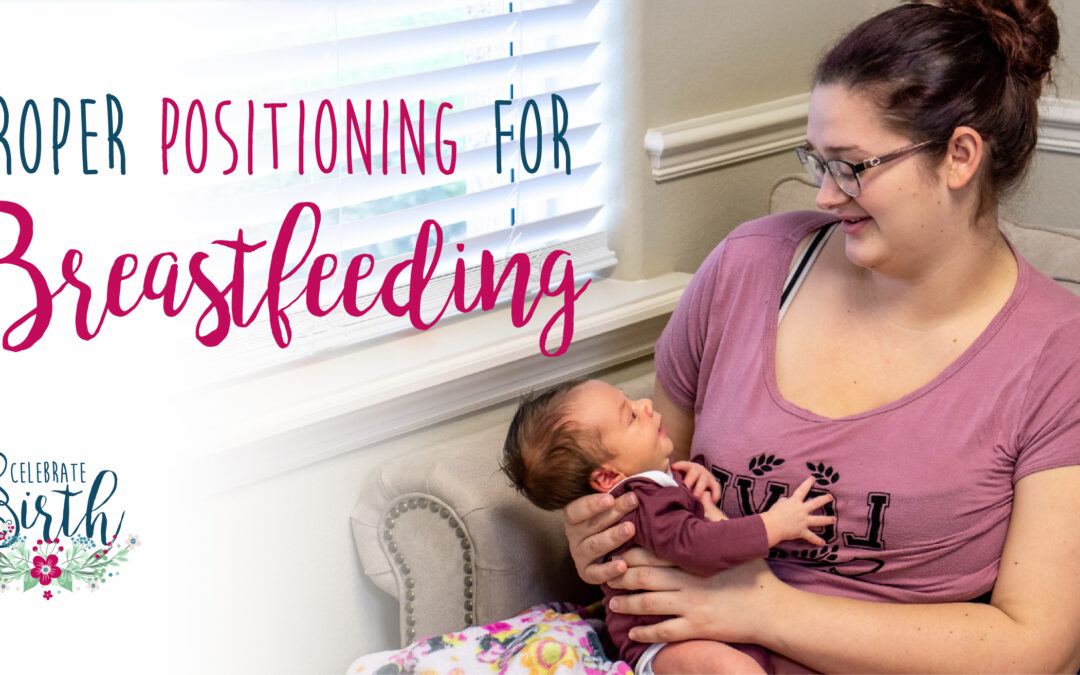Proper Positioning for Breastfeeding
Breastfeeding is natural, normal, and incredibly beneficial for both mom and baby. Unfortunately, it doesn’t always come free of challenges, especially in the first few weeks.
Some babies have trouble latching correctly, preventing them from breastfeeding effectively even if the mom has an ample supply. This may be due to improper positioning at the breast, but fortunately, this is the most common problem and usually the easiest to correct. By keeping a few tips and tricks in mind, you can try troubleshooting the issue at home with this guide.
How To Get A Good Latch
While you and your baby work to perfect the latch, it’s important to keep in mind that breastfeeding should not be painful. You may experience discomfort in the beginning as your breasts adjust to their new role. Think of normal breastfeeding pain as slightly chapped lips and need a little care. If your nipples are cracked, bruised, or bleeding, your baby’s latch will likely need adjusting. If you think that supply or oral structure abnormalities might be at play, first check with a lactation professional to rule out such causes.
Then, give these tips a try:
- Aim to begin feeds before your baby is showing hunger cues. (It is much harder to get a ravenous baby to latch than it is to get a calm baby to latch.)
- Use a pillow to help raise your baby so they are level with your breast.
- Start with your nipple pointing at your baby’s nose.
- Wait for your baby to open their mouth nice and wide.
- Quickly guide your baby to latch onto the breast (not just the nipple). All or most of the areola should be in the baby’s mouth, with more areola covered by the bottom lip than the top.
Once your baby is latched, make sure their chin is buried deep into your breast and their nose is free. If you notice that their nose is closer to the breast than their chin, try scooting their bottom across your abdomen, toward your opposite breast. This will make their head drop back a little, then apply firm pressure behind their shoulder blades to drive their chin into the breast.
Baby-led Latching / Biological Nursing
Consider also giving baby led-nursing a try. It’s a method of nursing that uses the baby’s innate ability to find and latch onto the breast when placed skin-to-skin with the mother.
Here’s how to initiate it:
Get comfortable on your bed or couch, leaning back. Be sure to have a few pillows handy so that you can support your head and arms as you settle into a comfortable position.
- Start the session about 10 minutes before you anticipate your baby wanting to eat, so that you can be ready when your baby starts showing you hunger cues.
- Position your baby belly-to-belly with you, like a starfish suctioned to the side of a fish tank. Skin-to-skin contact will help your baby get settled and ready to latch independently. Just be sure their head is level with your breast and their arms are stretched out to either side (not curled up under their own body).
- Then… relax!
- After a few minutes, babies in this position usually begin to sniff and root around, eventually finding their way to the nipple. Give them some time to try latching on their own, but if after a few minutes they are still struggling to latch, use your hand to guide their head to the proper angle at the breast.
Once your baby is latched, just like before, make sure their chin is buried deep into your breast and their nose is free. If their nose is closer to your breast than their chin, try lowering the position of their body just a little or have them straddle your thigh on the opposite side. This will require them to look up at your breast in order to latch and will lead to a deeper attachment.
Solutions To Latch Problems
A painful or ineffective latch is a common issue and sometimes breastfeeding moms are able to resolve the problem on their own. To be proactive and prepare for a positive breastfeeding journey, you can attend a breastfeeding class conducted by a certified lactation expert to learn proper positioning and much more. (Though, such a class would be beneficial to attend even after your baby has arrived.) If you’ve tried correcting your baby’s latch but are still experiencing pain, your baby remains fussy at the breast, or if your baby is slow to gain weight, consider making an appointment with a trained lactation professional for one-on-one support.
It’s never a bad idea to ask for help! Whether you’re dreading each feeding session or just want to make sure your baby is nursing as efficiently as possible, our lactation counselors are ready to help.

